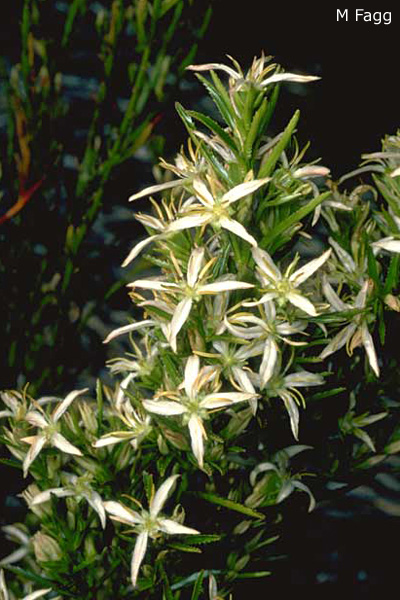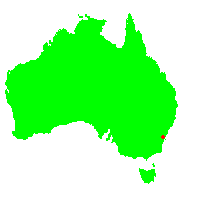General Description:
The genus Haloragodendron consists of 5 species all endemic to Australia. H.lucasii is a green, multi-stemmed shrub that grows to 1.8 metres and usually has fresh green growth on the ends of its branches. The stems are four-angled and hairless. The leaves are opposite, narrow-elliptic, 25 to 50 millimetres long and distinctly toothed on the margins. H.lucasii produces lots of white flowers in spring.
First recorded near “Gordon in a wild gully” in 1908, five specimens of Haloragodendron lucasii were held in the National Herbarium of New South Wales. The last specimen was collected in 1926, and following subsequent unsuccessful searches, the species was presumed extinct. That is until 1986 when the species was rediscovered at St.Ives, a northern suburb of Sydney.
The rediscovered population was spread over a distance of at least 150 metres along a terrace below the cliff line, and appeared to comprise several hundred plants growing among and out of a tangle of Gleichenia and Bauera. However, it was determined that the rediscovered population comprised only two plants. The first plant covered an area of 20 square metres, with its underground stems giving the appearance of many separate plants. The second plant was even larger, spreading some 120 metres along the terrace, but was discontinuous probably due to the effect of bushfires and the surrounding vegetation. It was, however, found to be a single individual or clone. More remarkable was that the plants were estimated to be 400 to 500 years old.
It was also established that the plants were sterile (ie. produced no pollen). It was speculated that here was a remnant plant from an earlier era bound for extinction in the short term.
Because of its rareity, propagation material of Haloragodendron lucasii is not available. It is known that the species strikes reasonably easily from cuttings.
* EPBC Act = Environment Protection and Biodiversity Conservation Act 1999;
ROTAP = Rare or Threatened Australian Plants (Briggs and Leigh, 1988)
For further information refer the Australian Plants at Risk page
These notes are based on the article “The Romance of Haloragodendron lucasii” by Ross Doig.

 Australian Native Plants Society (Australia)
Australian Native Plants Society (Australia)













